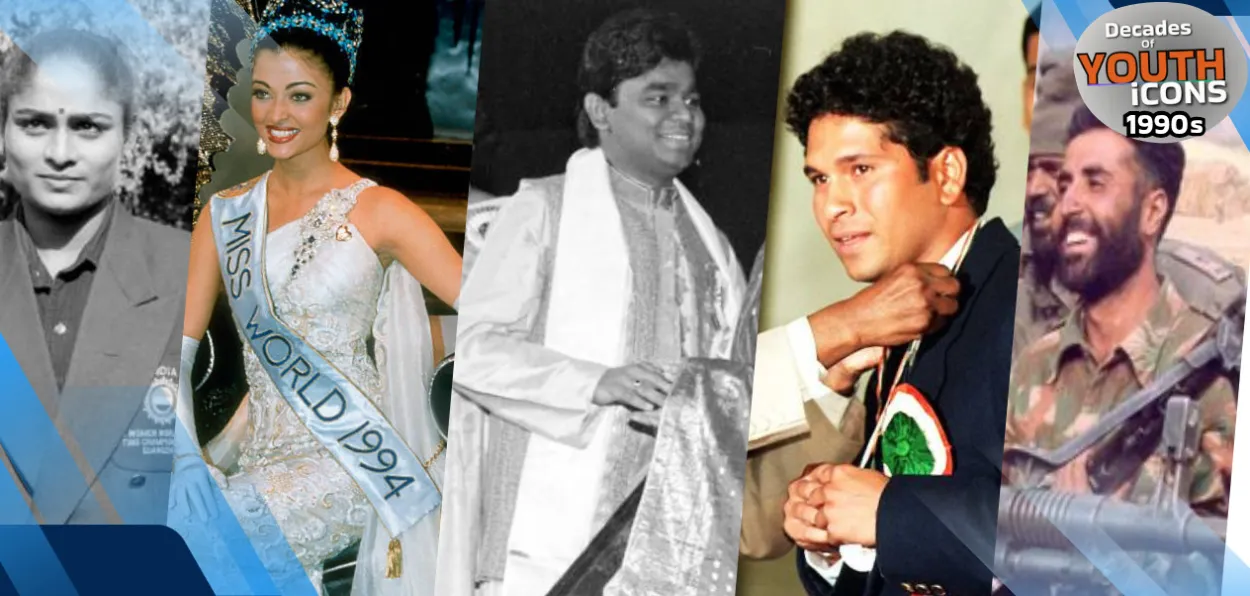
Saquib Salim
The 1990s were turbulent times for India. It witnessed the assassination of Rajiv Gandhi, insurgencies in Punjab, Kashmir, Assam, Mizoram, and Nagaland, and the Bombay bomb blasts. Many communal riots and terrorist attacks rocked the nation, and at the end of the decade, Pakistan invaded the Indian territory in Kargil. The Pokhran nuclear tests, too. The Indian youth were inspired by many young achievers, of whom five are being listed here.
Sachin Tendulkar
If cricket is a religion in India, Sachin Ramesh Tendulkar was the God. Throughout the 1990s, when India was not the best cricketing team and was often defeated by Australia and South Africa, Sachin shouldered the hopes of a billion people. All the Indians cheered him, hoped for miracles from him, and believed in him. The Indian cricket team revolved around Sachin during the 1990s.
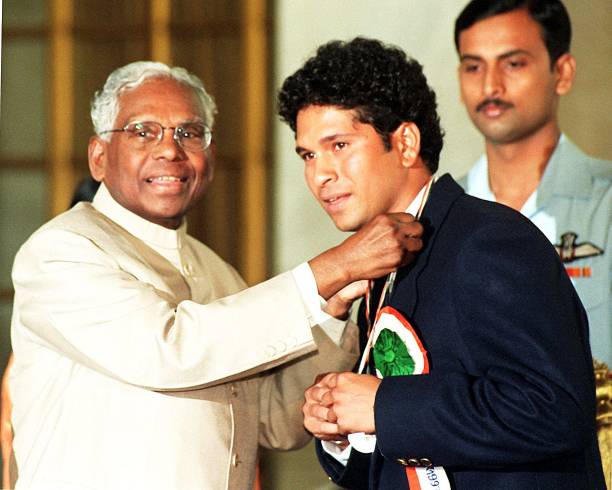
Sachin Tedulkar receiving Rajiv Gandhi Khel ratan award from President K R Narayanan in 1998
Who can forget the infamous semifinal of the 1996 World Cup against Sri Lanka, where his departure triggered a collapse and India lost the match? Memories of the Chennai test against Pakistan, where Sachin’s wicket led India to lose a match they had almost won, are still fresh among the Indians. An imperious Sachin dictated terms to all-time greats like Shane Warne at will. This was Sachin who gave us the belief that India could do it, we could win, and we could be the best. As the 1990s closed in, we got Saurav Ganguly, Rahul Dravid, and many others, but the 1990s belonged to Sachin. His failure meant that India would lose, and at times, even when he scored, others would let him down.
Sachin needs no introduction, and any eulogy will fall short of his stature.
Aishwarya Rai
A 21-year-old architecture student, Aishwarya, was already a known face in India as a model in advertisements for Pepsi. She, however, took the world by storm by becoming the second Miss World from India in 1994. Arguably, she is one of the most famous and popular among all the winners of the beauty pageant. Her beauty, confidence, commitment to social work, and professionalism became a symbol of young Indian women in a post-liberalisation world.
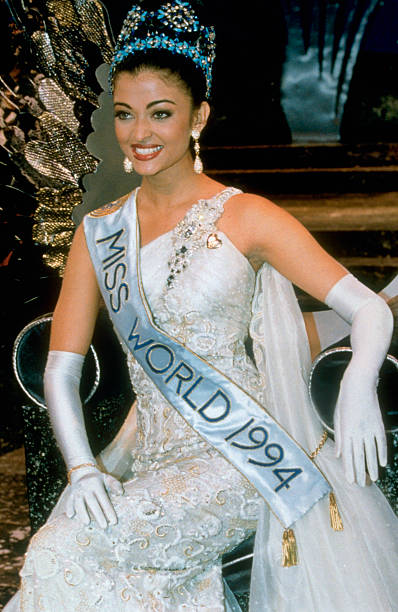
Miss World Aishwarya Rai
India had just opened up to the foreign markets, and Aishwarya was the statement - The market would not be dictated by European beauty standards; instead, Western markets would be influenced by Indian standards. More and more Indian women took to the glamour industry, not only as models but also as beauticians, hair stylists, fashion designers, and other professions. Aishwarya gave vent to the Indian girls’ dream of achieving big at the international stage.
Karnam Malleswari
In 1994, 19-year-old Karna Malleswari was awarded the Arjuna award for her exceptional performance in weightlifting. During the 1990s, Malleswari had been the Asian as well as the World Champion in weightlifting. She won at least 29 international medals before 2000, when she brought the ultimate glory of an Olympic Bronze at Sydney. She became the first Indian woman to win an Olympic medal with this bronze.
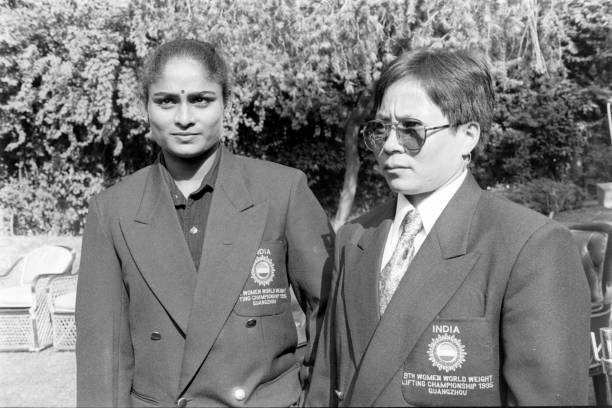
Karnan Malleshwari (Left ) with Kunjurani Devi in 1995
Before Malleswari, only P. T. Usha was a woman sportsperson in India who gained popularity, but she could not win an Olympic medal. Malleswari brought to the centre of attraction women in sports in the country, especially in games often considered a bastion of men.
Women in the late 90s started taking up weightlifting, bodybuilding, and other fitness-related sports more.
A.R. Rahman
In 1992, Isai Puyal (musical storm) hit the Indian music industry. The impact was so hard that it destroyed everything that had existed for years. The Indian music before this storm and after was entirely different. Isai Puyal is the name given to A. R. Rahman by his admirers. Rahman debuted with Roja in 1992 and became a national sensation overnight. What sets him apart is the use of the latest technologies with traditional Indian music. This was completely new.
_in_1995.jpg) A R Rehman receiving Sangeet Samman Award from Sonal Mansingh in 1995 as Najma Hepthullah looks
A R Rehman receiving Sangeet Samman Award from Sonal Mansingh in 1995 as Najma Hepthullah looks
Nobody had imagined that the new kind of technology could be used to create the magic of Indian music. People loved his music. Almost everyone coming after that has tried to follow in his footsteps. He won the National Film Award with his first movie. Over the years, he added half a dozen National Awards, more than two dozen Filmfare, two Oscars, Grammys, Golden Globe, and several awards to his kitty.
In India, where the film used to be sold under the name of actors, in the 90s, the movies with Rahman’s music were promoted in his name. The star value he had was unprecedented.
Captain Vikram Batra
As the 1990s closed in, the Indian borders in Kashmir were threatened by the Pakistan Army in what was known as the Kargil conflict. India repulsed the armed invasion of its territory, but not without several sacrifices. Captain Vikram Batra, a 24-year-old army officer, became the symbol of valour and courage that emerged from this Indian win.
He sacrificed his life to win famous victories against Pakistan in June and July 1999. With the codename Shershah and victory signal “Yeh dil mange more”, Batra captured the point 5140 in Dras on 20 June 1999 after showing exceptional courage. The Param Vir Chakra citation notes, “During 'Operation Vijay', on 20 June 1999, Captain Vikram Batra, Commander Delta Company, was tasked to attack Point 5140. Captain Batra with his company skirted around the feature from the East and, maintaining surprise, reached within assaulting distance of the enemy. Captain Batra reorganised his column and motivated his men to physically assault the enemy positions. Leading from the front, he, in a daredevil assault, pounced on the enemy and killed four of them in a hand-to-hand fight.”
The capture of 5140 set in motion a series of victories. He became a war hero in India. But the ultimate glory was awaiting him. Before the battle, he used to say, “I’ll either come back after hoisting the Indian flag in victory or wrapped in it. But I’ll return for sure.” Indeed, he came back after hoisting the Indian flag and was himself wrapped in it.
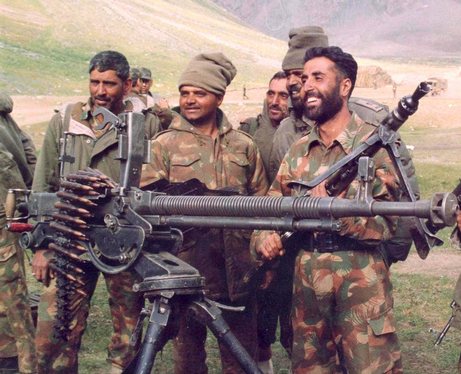
Capt Vikram Batra in the Kargil War
Batra’s citation reads, “On 7 July 1999, in another operation in the area Pt 4875, his company was tasked to clear a narrow feature with sharp cuttings on either side and heavily fortified enemy defences that covered the only approach to it. For speedy operation, Captain Batra assaulted the enemy position along a narrow ridge and engaged the enemy in a fierce hand–to-hand fight and killed five enemy soldiers at point-blank range. Despite sustaining grave injuries, he crawled towards the enemy and hurled grenades, clearing the position with utter disregard for his safety. Leading from the front, he rallied his men and pressed on the attack and achieved a near-impossible military task in the face of heavy enemy fire. The officer, however, succumbed to his injuries. Inspired by his daredevil act, his troops fell upon the enemy with vengeance, annihilated them, and captured Point 4875.”
ALSO READ: Indian youth icons of the 1980s conquered space and sports
India lost a brave son, but this sacrifice inspired thousands more to join the ranks of the army to defend the country.
